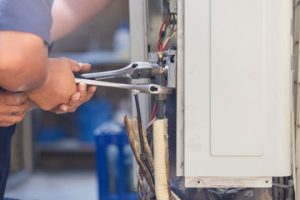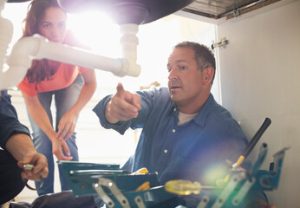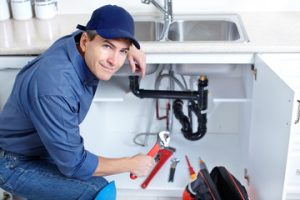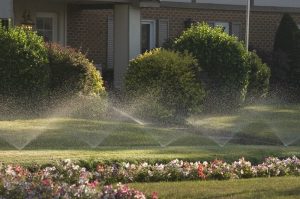Power Wash (also known as pressure washing) is a great way to remove dirt, mildew and other debris from surfaces such as siding, driveways, decks, pavers and more. Power washers can also be used to remove oil stains from driveways and sidewalks, allowing them to look brand new.
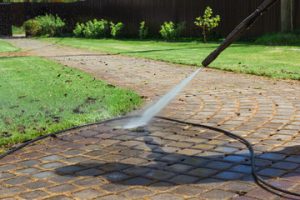
Regular power washing can prevent long-term damage to your property, and can even save you money. Here are some of the top reasons why you should power wash regularly. Contact Windsor Power Wash for professional help.
Over time, dirt, mildew, and stains build up on exterior surfaces like siding, walls, decks, driveways, and walkways, leaving them looking dull and unloved. Power washing can eliminate these unsightly marks and unveil a fresh, clean appearance that instantly enhances curb appeal.
For homeowners, curb appeal is a powerful selling point and a symbol of care and quality. Studies show that homes with pristine exteriors sell faster and at higher prices than those without. Power washing is a cost-effective way to boost curb appeal and improve your property’s value.
Moreover, if your commercial building’s exterior is covered in grime and organic debris, it can give visitors the wrong impression about the business inside. Whether it’s a restaurant, storefront, or office, a dirty exterior can damage your reputation and keep customers away. Power washing removes stubborn stains and leaves surfaces looking brand new, which can boost your company’s visibility and attract more customers. Keeping your business’s exterior in top condition with regular power washing can also protect against costly repair bills down the road.
Prevents Long-Term Damage
Power washing is an efficient, effective way to clean a variety of surfaces. It uses specialized equipment to apply water at different pressures for specific materials, allowing it to remove oil stains, embedded dirt, and other debris from concrete or asphalt without damaging the material itself. It also removes moss, mildew, and algae growth from siding, decking, patios, and other outdoor structures. In addition, it helps to prevent mold, dust, and other irritants from building up on exterior surfaces, improving indoor air quality.
Improper washing can lead to surface damage, including cracking or chipping, especially on porous materials like brick or stone. It can also etch the surface of certain materials, such as vinyl siding or stucco. However, when performed correctly by trained professionals, power washing can remove harmful substances and reduce long-term damage to your property.
Regular cleaning of exterior surfaces by professional power washing contractors improves your home’s curb appeal and increases its value. It can also help to prevent the accumulation of dirt and other debris, which can damage window frames, metal railings, gutters, and other structures around your home. In addition, mold, mildew, and other contaminants can deteriorate wood or paint and cause structural damage to your home.
In commercial settings, regular power washing of sidewalks, parking lots, storefronts, and other commercial buildings prevents the build-up of stains, oil spills, and other residues that detract from the appearance of a business and create potential safety hazards for employees or customers. It also eliminates slip and fall hazards caused by slippery algae, mold, or dirt.
Understanding how to spot potential damage during power washing is vital for property owners and contractors alike. Proper inspection before and after the cleaning process enables property owners to catch issues that may worsen during power washing, such as rust or other types of corrosion on window frames and metal railings. It’s also important to be able to recognize signs of moisture intrusion, which can lead to further damage or even mold and mildew. Using technology like digital thermal imaging can help to identify these issues before they become a problem.
Safety
Power washing is a great way to clean your home and restore its curb appeal, but it can also be dangerous if you aren’t careful. Power washers use gas-powered engines that can release carbon monoxide (CO) into the air. This colorless, odorless gas is produced when fuel burns and can be deadly if inhaled. CO poisoning causes dizziness, headaches, and nausea. Fortunately, there are several things you can do to increase your safety while washing.
Before using a pressure washer, read the manual to learn how to operate it safely. Make sure that the pressure washer has an emergency shut-off valve and that all of its hose connections are tightly sealed. You should also wear appropriate safety gear, including protective clothing and goggles. Always test the water spray on an inconspicuous area of your home to determine the proper pressure and nozzles for the surface you are cleaning. It is also important to ensure that the water jet is not directed at electrical wiring or any other hazardous materials.
When you’re ready to start washing, keep children and pets away from the area. The high-pressure water can damage them, so it’s best to keep them away from outdoor surfaces like decks or patios. Also, be sure to clear the area of any objects that might get wet, such as furniture or outdoor equipment.
Avoid holding the nozzle too close to the surface you are cleaning. This can damage the material and cause erosion from excessive force. Instead, hold the nozzle at least 12 inches away from the surface and move it in a steady back-and-forth motion. Also, be sure to follow the equipment manufacturer’s directions regarding nozzle sizes and pressure quantities.
Finally, make sure to turn off the power washer and bleed off the pressure before disconnecting it from the hose. This will prevent any accidental leaks that could result in a loss of power or an unsafe amount of water spray. If you’re unsure how to properly operate the power washer, consider hiring a professional. They will have the right equipment and knowledge to ensure your safety while maintaining the quality of your home’s exterior.
Preserves the Value of Your Home
Over time, outdoor surfaces like patios, sidewalks, decks, walls, roofs, and gutters can become dirty or discolored due to dirt, mildew, algae, or other contaminants. Power washing removes these unsightly substances and restores surfaces to their original, attractive appearance, instantly enhancing curb appeal. Whether your home needs a little extra pizazz before putting it on the market, or you simply want to give your property a fresh, appealing look, power washing is a cost-effective solution.
In addition to enhancing the aesthetics of your home, regularly cleaning your exterior surfaces also preserves their lifespan and prevents costly repairs or replacements. This is because mold, mildew, and other harmful organisms can cause deterioration and damage to surfaces like vinyl siding, wood, and concrete. Regular cleaning by a professional power washing company eliminates these organisms and extends the lifespan of your exterior surface materials.
A well-maintained exterior adds to the overall value of your home and is a great selling point for potential buyers. In fact, some studies suggest that a home that is professionally power washed can sell for $10,000 to $15,000 more than a comparable, non-power washed home. Aside from boosting your property’s curb appeal, regular power washing reduces pollen build-up, which can trigger allergies and respiratory issues for family members.
Before you embark on a DIY power wash, be sure to prepare the area and equipment by clearing away loose debris, sweeping or blowing off dust or leaves, and covering or shielding any areas that require special protection from overspray or runoff. Once you have all the necessary tools and materials, ensure that your pressure washer matches the surface and cleaning job at hand and adjusts the temperature and pressure settings accordingly. Finally, always remember to read and follow safety instructions, take heed of warnings, and use appropriate gloves and goggles. With these steps in place, you can achieve effective, long-lasting results while safeguarding yourself and your property from damage. Power washing is an eco-friendly alternative to traditional cleaning techniques, as it does not rely on harsh chemicals that can harm the environment.
